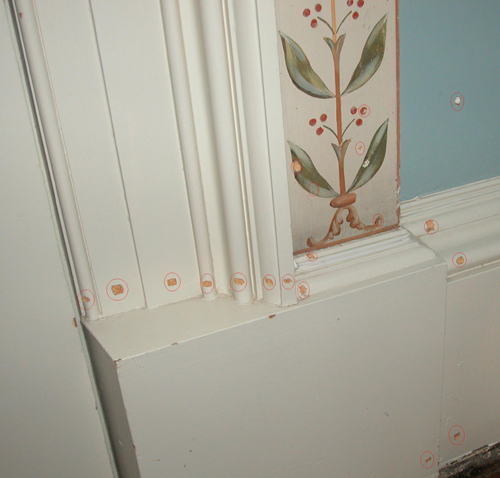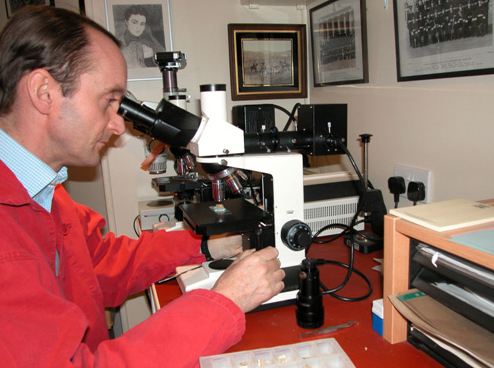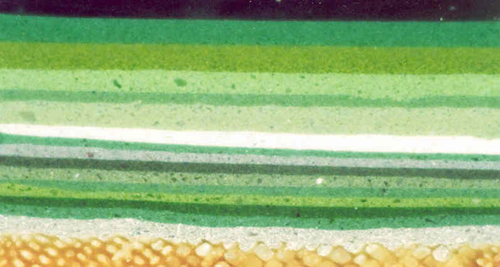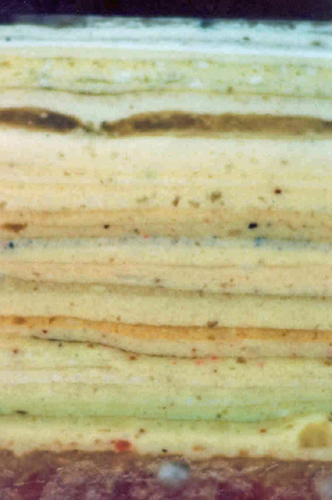
The extent of sampling will depend on the number of individual elements within a room, and the amount of information available. A single room may require between forty and one hundred samples.

The location of each is recorded and carefully numbered. Being small and fragile, the samples are next embedded in a clear polyester resin in order to support them during the polishing process.



The aim is to present a smooth and optically-clear face in order for the full sequence of paint layers to be examined under the microscope.

The nature of the priming coat will be made clear, and the undercoats can be differentiated from the top, or finish, coats.

The same process may also be used to gain an idea of the structural integrity of the paint layers. Their effective adherence to the wall, and inter-coat adhesion can often be gauged by looking at the composition of each layer.


Subscribe using the icon below